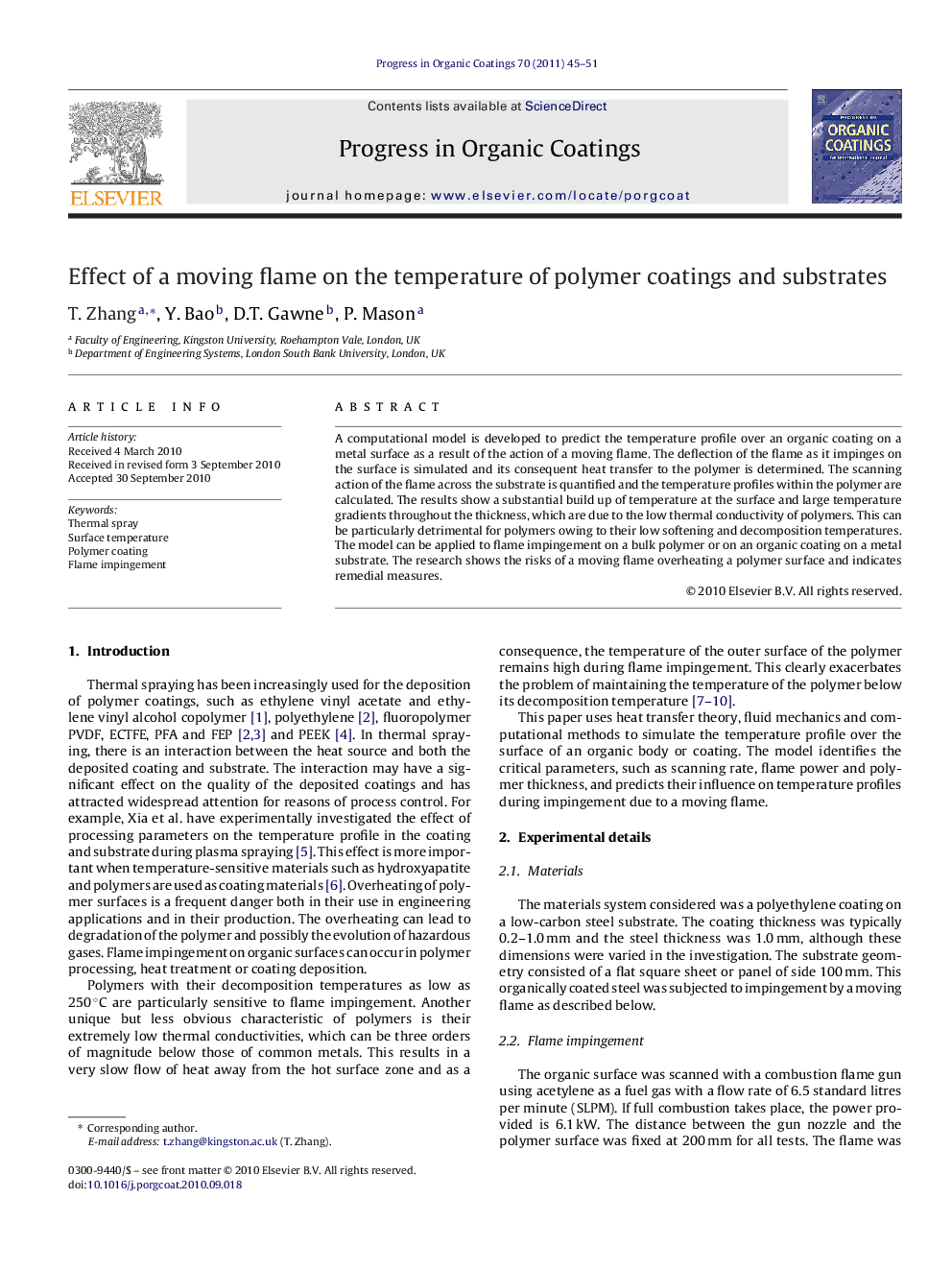| کد مقاله | کد نشریه | سال انتشار | مقاله انگلیسی | نسخه تمام متن |
|---|---|---|---|---|
| 693453 | 889882 | 2011 | 7 صفحه PDF | دانلود رایگان |

A computational model is developed to predict the temperature profile over an organic coating on a metal surface as a result of the action of a moving flame. The deflection of the flame as it impinges on the surface is simulated and its consequent heat transfer to the polymer is determined. The scanning action of the flame across the substrate is quantified and the temperature profiles within the polymer are calculated. The results show a substantial build up of temperature at the surface and large temperature gradients throughout the thickness, which are due to the low thermal conductivity of polymers. This can be particularly detrimental for polymers owing to their low softening and decomposition temperatures. The model can be applied to flame impingement on a bulk polymer or on an organic coating on a metal substrate. The research shows the risks of a moving flame overheating a polymer surface and indicates remedial measures.
Research highlights▶ Developed a computer model to simulate the temperatures in a surface heated by a moving flame. ▶ Moving boundary conditions were used to reflect the nature of moving flame. ▶ Analysis on the effect of measured temperatures as boundary condition. ▶ Analysis on the effect of processing parameters. ▶ Analysis on the effect of coating materials and thickness.
Journal: Progress in Organic Coatings - Volume 70, Issue 1, January 2011, Pages 45–51